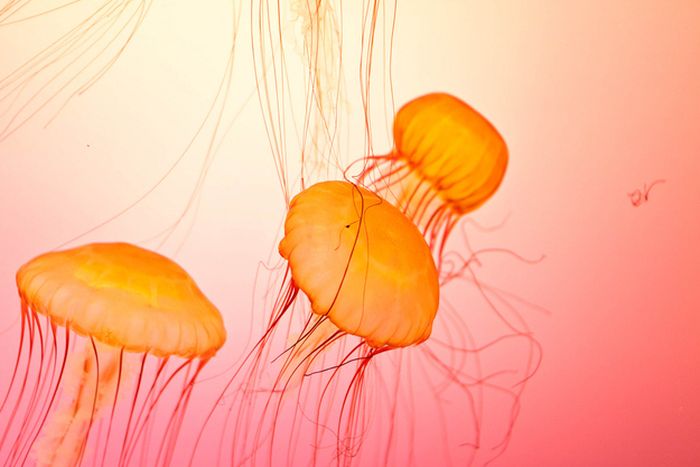|
|
Jellyfish
|
Most jellyfish have a second part of their life cycle, which is called the polyp phase. When single polyps, arising from a single fertilized egg, develop into a multiple-polyp cluster, connected to each other by strands of tissue called stolons, they are said to be "colonial." A few polyps never proliferate and are referred to as "solitary" species.
Anatomy
Jellyfish do not have specialized digestive, osmoregulatory, central nervous, respiratory, or circulatory systems. They digest using the gastrodermal lining of the gastrovascular cavity, where nutrients are absorbed. They do not need a respiratory system since their skin is thin enough that the body is oxygenated by diffusion. They have limited control over movement, but can use their hydrostatic skeleton to accomplish movement through contraction-pulsations of the bell-like body; some species actively swim most of the time, while others are passive much of the time. Jellyfish are composed of more than 90% water; most of their umbrella mass is a gelatinous material — the jelly — called mesoglea which is surrounded by two layers of epithelial cells which form the umbrella (top surface) and subumbrella (bottom surface) of the bell, or body.
|
|









